Construct the midpoint or perpendicular bisector of a segment
Key Notes :
A perpendicular bisector splits a segment into two congruent segments and is perpendicular to that segment. So, the perpendicular bisector of a segment passes through the midpoint of the segment at a 90° angle.
For example, CD⟂AB at point M and AM≅BM. So, CD is the perpendicular bisector of AB.
Perpendicular Bisector Theorem
The Perpendicular Bisector Theorem states that if a point is on the perpendicular bisector of a segment, then it is equidistant from the endpoints of the segment.
For example, the diagram below shows that point Q is on the perpendicular bisector of PR.
So, point Q is equidistant from points P and R. That means that PQ≅QR.
Using the Perpendicular Bisector Theorem
You can use the Perpendicular Bisector Theorem to solve for missing side lengths in triangles.
Let’s try it! Find the length of KL.
Since ∠JMK is a right angle and JM≅LM, KM is the perpendicular bisector of JL. This means that point K is on the perpendicular bisector. Therefore, JK≅KL by the Perpendicular Bisector Theorem.
So, JK=KL=6.1.
Another example
Let’s try another example! Find the value of t.
Since ∠WZX is a right angle and WZ≅YZ, XZ is the perpendicular bisector of WY. Therefore, WX≅XY by the Perpendicular Bisector Theorem.
So, you can set WX equal to XY and solve for t.
WX=XY
2t+4=3t–7 Plug in WX = 2t + 4 and XY = 3t – 7.
2t+11=3t Add 7 to both sides.
11=t Subtract 2t from both sides.
So, t=11.
Converse of the Perpendicular Bisector Theorem
The Converse of the Perpendicular Bisector Theorem states that if a point is equidistant from the endpoints of a segment, then it is on the perpendicular bisector of the segment.
For example, the diagram below shows that WX≅XY, meaning that point X is equidistant from the endpoints of WY.
So, point X is on the perpendicular bisector of WY.
Using the Converse of the Perpendicular Bisector Theorem
You can use the Converse of the Perpendicular Bisector Theorem to solve for missing side lengths in triangles.
Let’s try it! Find the length of DG.
Since DE=EF=52, point E is equidistant from the endpoints of DF. Therefore, point E is on the perpendicular bisector of DF by the Converse of the Perpendicular Bisector Theorem.
You also know that ∠EGF is a right angle. So, EG is the perpendicular bisector of DF. That means that DG≅FG. You can set DG equal to FG and solve for b.
DG=FG
7b–15=4b+9 Plug in DG = 7b – 15 and FG = 4b + 9
7b=4b+24 Add 15 to both sides.
3b=24 Subtract 4b from both sides.
b=8 Divide both sides by 3.
Now, substitute b=8 into 7b–15 to find the length of DG.
7b–15
7(8)–15
56–15
41
So, DG=41.
Constructing perpendicular bisectors
You can construct a perpendicular bisector using a straightedge and a compass.
Start with the segment you want to bisect.
Now, set your compass to a setting greater than 1/2 AB and place the point of your compass at point A. Draw arcs above and below AB.
Next, using the same compass setting, place the point of your compass at point B. Draw arcs above and below AB.
Then, mark the points where the arcs intersect. Call them points C and D.
Last, draw a line that connects points C and D using your straightedge.
CD is the perpendicular bisector of AB!
Why does this construction work?
Recall that the Converse of the Perpendicular Bisector Theorem says that if a point is equidistant from the endpoints of a segment, then it is on the perpendicular bisector of the segment.
In the steps above, if you drew the entire circle for each pair of arcs, the circles would be centered at point A and point B.
⨀A and ⨀B were created using the same compass setting, so they are congruent. Since the circles are congruent and point C is on both of them, AC=BC.
So, by the Converse of the Perpendicular Bisector Theorem, point C is on the perpendicular bisector of AB.
Similarly, since ⨀A and ⨀B are congruent and point D is on both of them, AD=BD.
So, by the Converse of the Perpendicular Bisector Theorem, point D is on the perpendicular bisector of AB.
Since both points C and D are on the perpendicular bisector of AB, CD is the perpendicular bisector of AB.
Learn with an example
Mark the midpoint of AB ?

Part of the construction was done for you. Here are the steps to create this part of the construction.
Start with the objects in the diagram below.

- Draw a circle with radius AB centred at A.
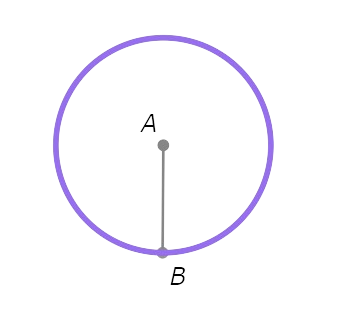
- Draw a circle with radius AB centred at B.
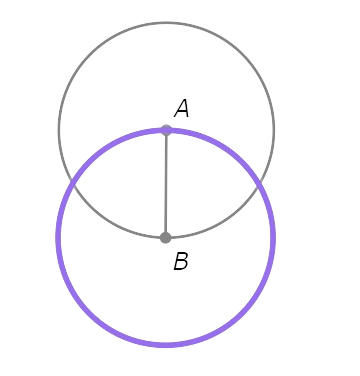
- Mark the points where ⨀A and ⨀B intersect. Call them C and D.
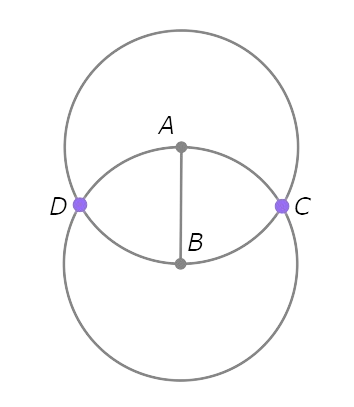
Since B and C are both on ⨀A, AB=AC. Since A and C are both on ⨀B, AB=BC. So, AB=AC=BC.
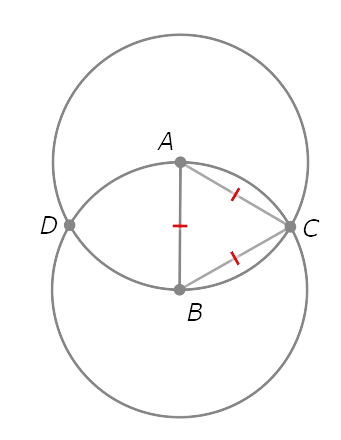
Similarly, AB=AD=BD.
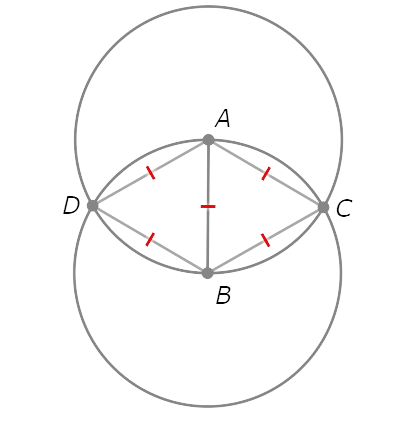
So, C and D are equidistant from A and B.
- Draw the line through C and D.
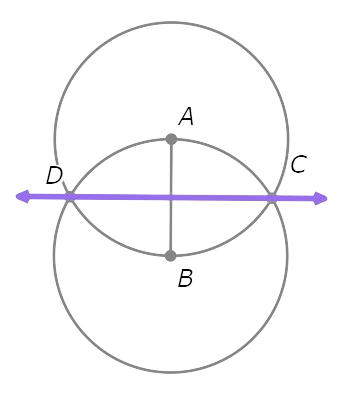
Recall that the set of points equidistant from A and B form the perpendicular bisector of AB. Since C and D are equidistant from A and B, they lie on the perpendicular bisector. So , CD is the perpendicular bisector of AB.

Complete the construction.
To complete the construction of the midpoint o f AB , carry out the following step:
- Mark the point where CD and AB intersect. Call it E.
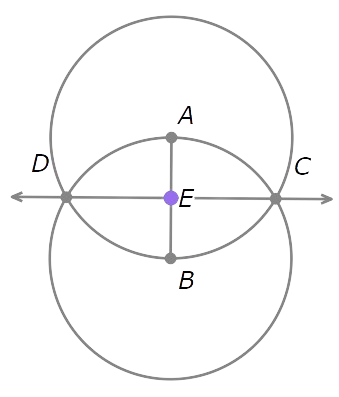
Since CD is the perpendicular bisector of AB, the intersection E is the midpoint of AB.
Mark the midpoint of AB?

Part of the construction was done for you. Here are the steps to create this part of the construction.
Start with the objects in the diagram below.
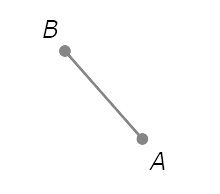
- Draw a circle with radius AB centred at A.

- Draw a circle with radius AB centred at B.
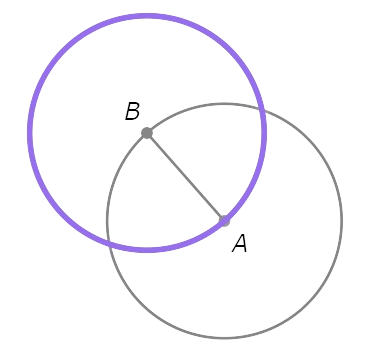
- Mark the points where ⨀A and ⨀B intersect. Call them C and D.
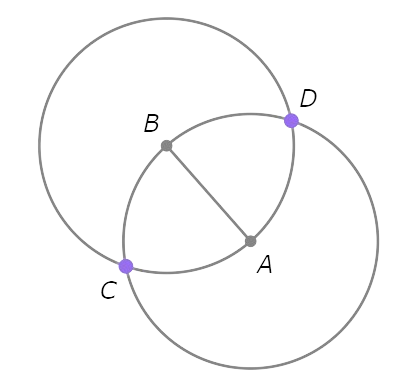
Since B and C are both on ⨀A, AB=AC. Since A and C are both on ⨀B, AB=BC. So, AB=AC=BC.
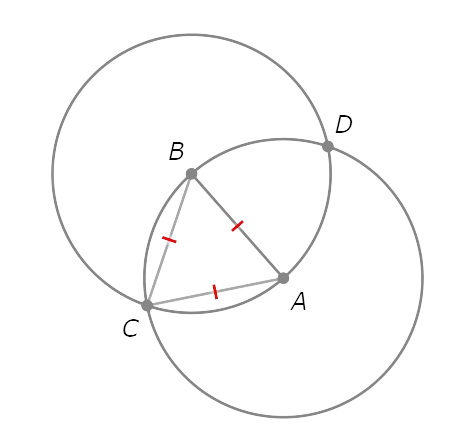
Similarly, AB=AD=BD.
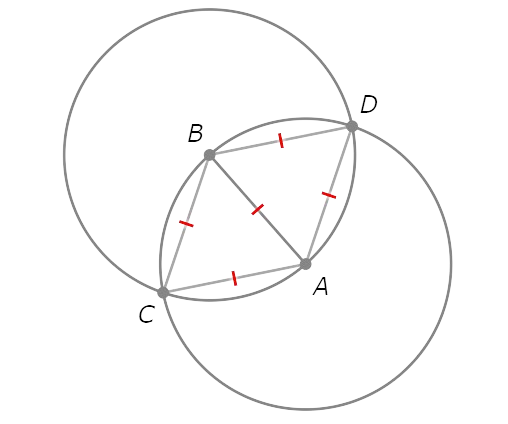
So, C and D are equidistant from A and B.
- Draw the line through C and D.
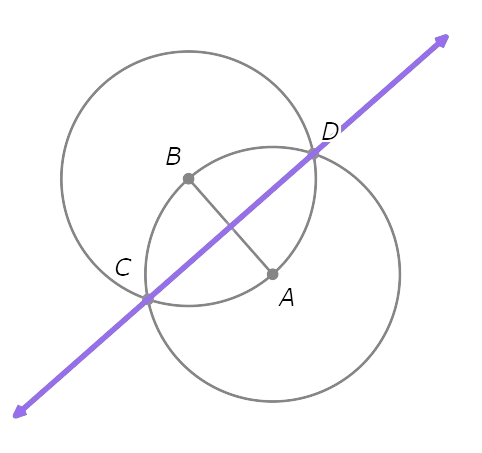
Recall that the set of points equidistant from A and B form the perpendicular bisector of AB . Since C and D are equidistant from A and B, they lie on the perpendicular bisector. So , CD is the perpendicular bisector of AB.
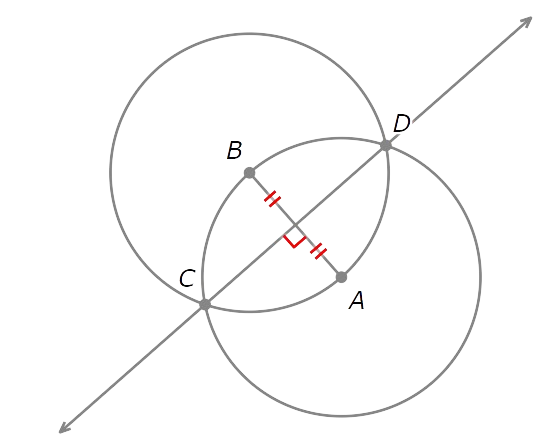
Complete the construction.
To complete the construction of the midpoint of AB , carry out the following step:
- Mark the point where CD and AB intersect. Call it E.
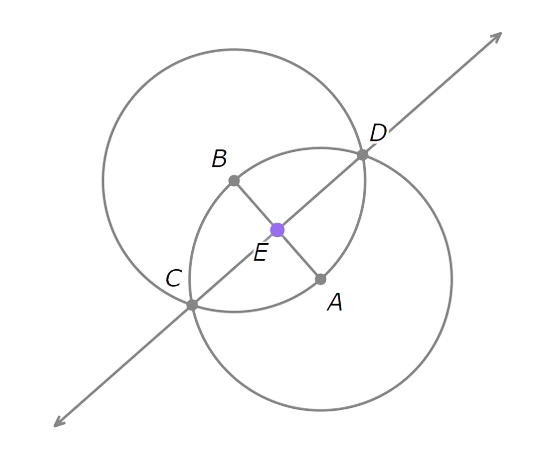
Since CD is the perpendicular bisector of AB , the intersection E is the midpoint of AB.
let’s practice!

